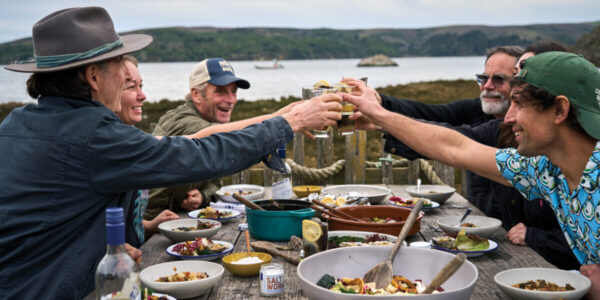
A Historic Rodeo Rides Again: Photographs and Stories from ‘The New Black West’
Photographer Gabriela Hasbun immortalizes the West’s oldest Black rodeo, and its riders, in a new book, ‘The New Black West: Photographs From America’s Only Touring Black Rodeo.’
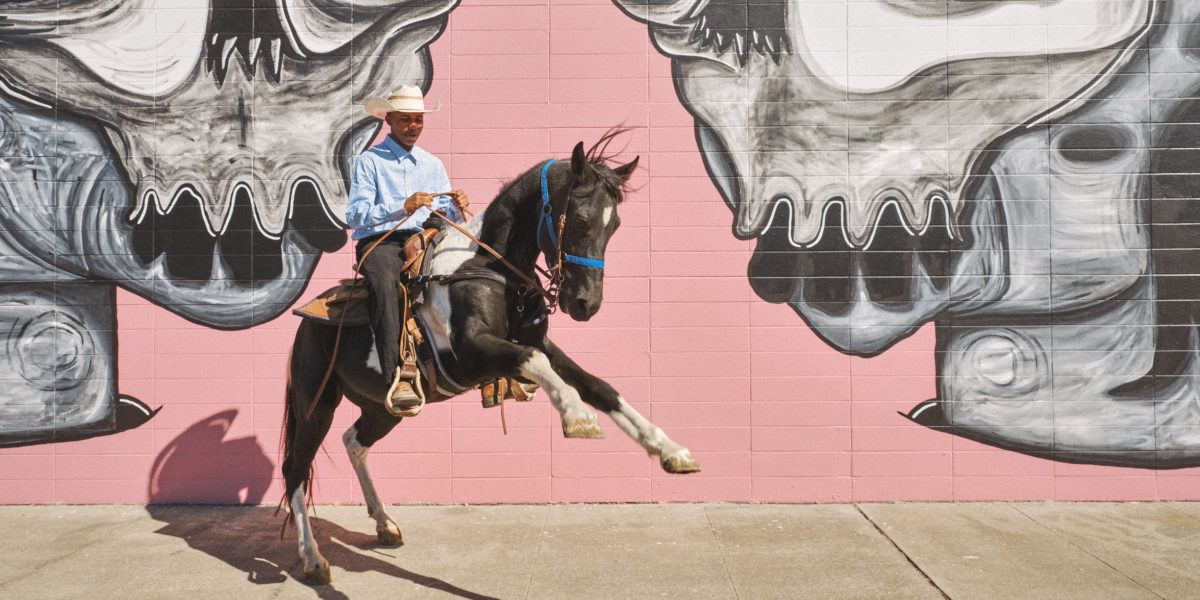
Gabriela Hasbun
The New Black West by Gabriela Hasbun, published by Chronicle Books 2022
The Bill Pickett Invitational Rodeo comes to Oakland, California, over two days every year to remind the community and educate future generations about just how deep their Western roots are. The smell of fried delicacies like catfish and hush puppies wafts through the air. Black cowboys atop horses file into the arena in their finest attire, some wave an African American flag in the sky. The country’s only touring Black rodeo brings together local vendors, over a dozen different food offerings, three hours of rodeo programming, and a space, as my grandma describes, “where you can see Black people shine in a positive light and share their culture and history.”
When I was growing up in Oakland, almost every event, park, or public space had some sort of historical significance. My high school was in the Fox Theater, a historical landmark that opened in 1928. I frequented community events with friends in DeFremery Park, a popular meeting place for members of the Black Panther Party back in the ’60s. The city isn’t just a hub for tech, great food, or bay views. To this day, small plaques adhere to downtown buildings, often missed by passersby.
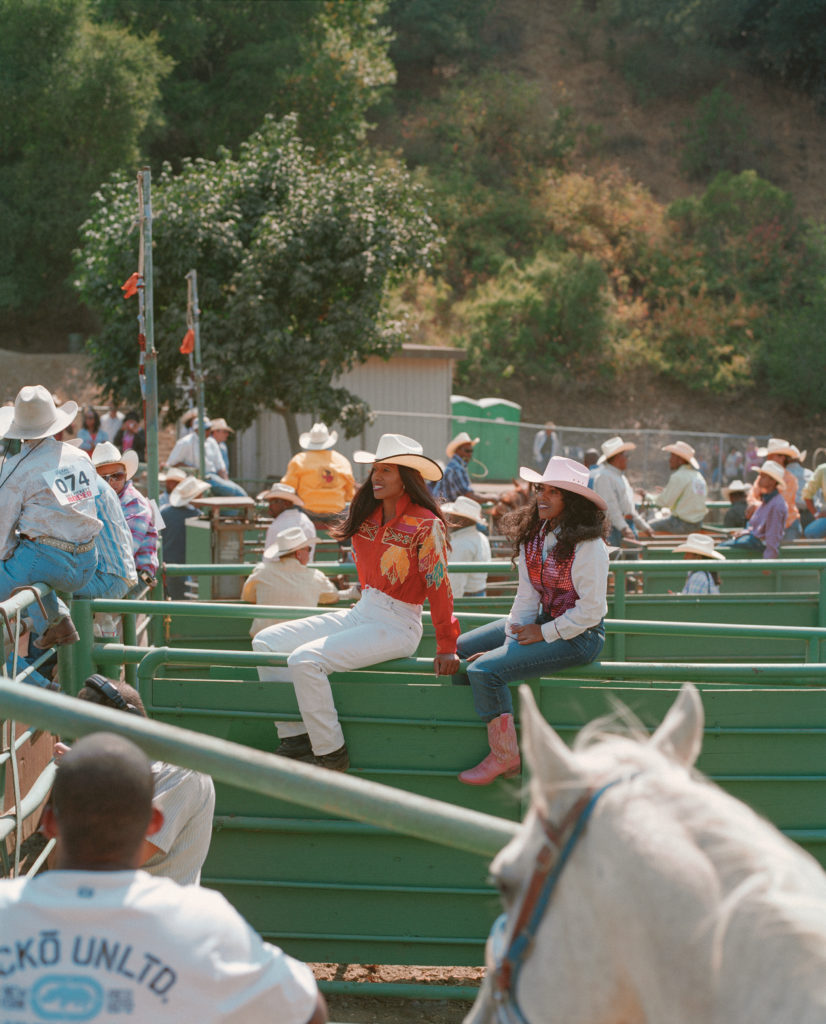
Mother and daughter cowgirls from Atlanta, Adrian Vance and Ronnie Franks (in red), sit behind the scenes, where contestants watch the spectacle in the arena. “Black rodeo is a celebration of African American history and culture. We ride on behalf of those who did not have the opportunity to do so,” said Ronnie, 13 years after Hasbun took this photo in 2008.
Gabriela Hasbun, The New Black West by Gabriela Hasbun, published by Chronicle Books 2022
Now, the rodeo’s presence in the Bay Area is immortalized in a book of photographs captured through the lens of photographer and 10-year attendee Gabriela Hasbun. Hasbun has spent the last few years compiling her images, interviews with riders, and stories from the rodeo into her first book, The New Black West: Photographs From America’s Only Touring Black Rodeo. “I take great pride in sharing their stories,” Hasbun tells us. “I find that Black history is so often misrepresented in this country and anything I can do to help and repair that I will do.”
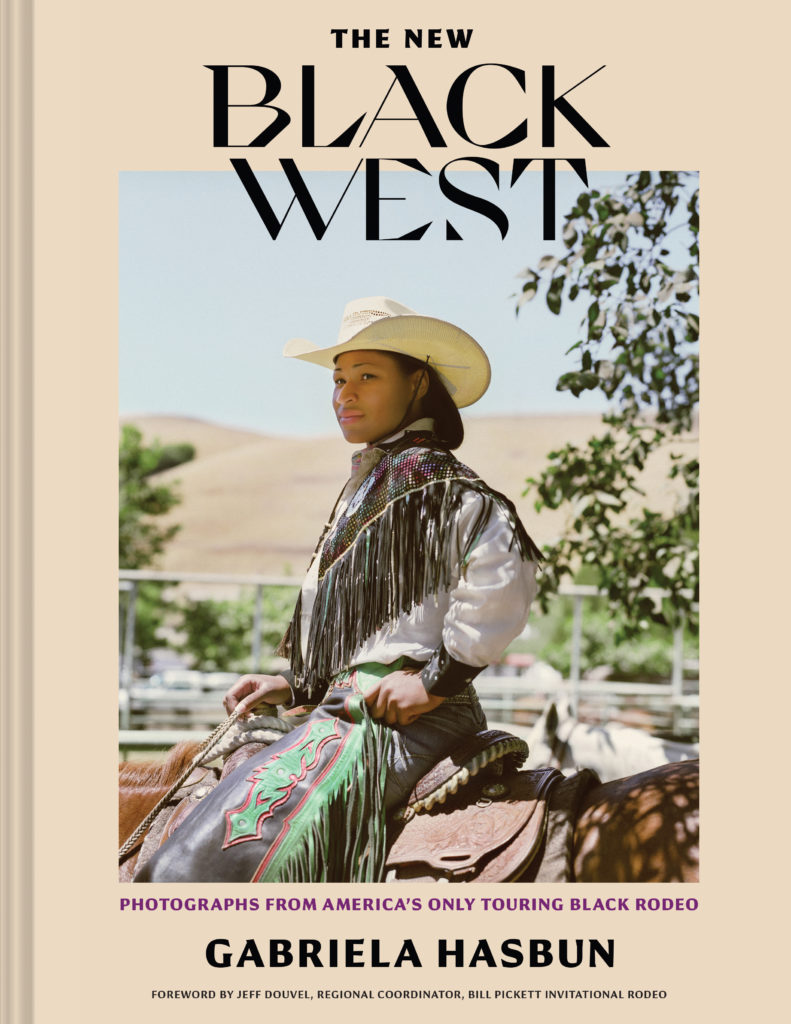
published by Chronicle Books 2022
The rodeo celebrates its 38th anniversary this year and returns to touring the country, facilitating the sharing of culture, creation of community space, and celebration of Black cowboys and cowgirls in the West. The book arrives as a resource to preserve the history and legacy of the riders, giving them an opportunity to tell their own stories alongside Hasbun’s captivating images.
An Unspoken History
In 1977, Lu Vason, one of the biggest entertainment promoters in the West at the time, attended the Cheyenne Frontier Days rodeo in Wyoming. He noticed a void: There wasn’t a single African-American rider or competitor. This observation set Vason on a mission to learn the history of Black cowboys and cowgirls during the late 19th century.
“The Black cowboy wasn’t misunderstood. He was left out and unspoken about,” according to Larry Callies, founder of The Black Cowboy Museum in Rosenberg, Texas. “The word cowboy was first used in the West to describe slaves. There were house boys, field boys, and cow boys.” White men were referred to as “cattle men, cow drivers, or cow punchers,” Callies continues, “until Hollywood heard about cowboys.”
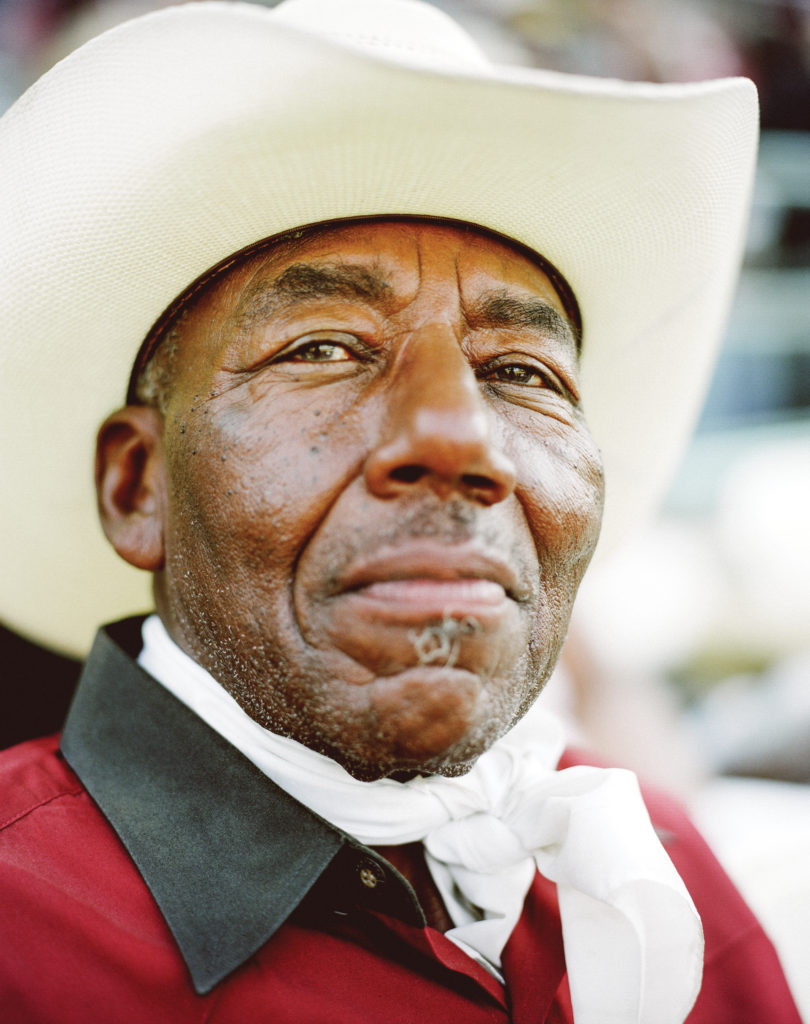
Mr. Theus, here in 2009, had attended all 35 rodeos at Rowell Ranch Rodeo Park as of 2019, since the rodeo’s arrival in Oakland in 1986. He recalls taking Vason out to visit the rodeo grounds before choosing the site as the venue for the Oakland BPIR. Both he and Vason owned hair salons in Oakland and shared a passion for Black cowboy heritage.
Gabriela Hasbun, The New Black West by Gabriela Hasbun, published by Chronicle Books 2022
Vason became a “student of history,” according to Jeff Douvel, a regional coordinator of the BPIR in the Bay Area. That included learning about Bill Pickett, a Black cowboy who was known for inventing the rodeo event called bulldogging, which involves jumping onto a bull from a horse and wrestling it to the ground.
Long after his participation in once all-white rodeos back in 1905, Pickett went on to become the first Black cowboy inducted into the ProRodeo Hall of Fame in 1989, years after his untimely death in 1932 due to injuries inflicted by being kicked by a horse.
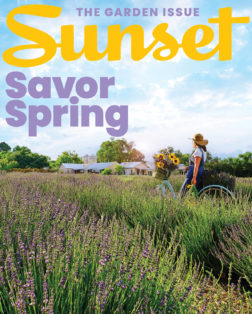
Sunset’s Garden Issue 2022
More from this issue:
- Need Help Taking Care of Your Air Plants? We’ve Got Just the Guy
- Stroll Through Lotusland, the Fantastical Botanic Garden of Your Dreams
- What Happens When the West Coast Barbecue King Sets out to Conquer Fried Chicken?
- Add Some Color to Your Brunch with Edible Flowers
While the role of the African American cowboy is often left out and misinterpreted in Hollywood depictions—recently in a Netflix movie with a character named after Pickett who is portrayed as a gun-slinging bad boy riding bareback—“the real history of the African American cowboy and cowgirl is so much deeper than that,” Douvel says.
The presence of Black cowboys and cowgirls created a community and job opportunities that later made way for the Great Migration of the early 20th century, when nearly six million Black people came West (and headed north) from southeastern states. To make this history accessible to all, and to offer a solution to the lack of representation in popular traveling rodeos at the time, Vason founded the Bill Pickett Invitational Rodeo in 1984.
“Lu created the rodeo so the truth could be told,” Douvel says. “We have told that story by showing the African American cowboy and cowgirl in their true light by traveling across the country.”
‘Nobody Can Ignore a Black Woman on a Horse‘
Hasbun first attended the rodeo in 2001. “My neighbor is from the South and she wanted fried catfish,” Hasbun tells us. “She told me to get my camera and that we were going to the rodeo. I grew up in El Salvador so I had never been to the rodeo. I got there and was blown away.”
Hasbun returned year after year with her camera to take pictures of competitors as they entered the arena and attendees dressed to impress. Along the way, she formed personal relationships with the riders who inspired her beyond those forged in her day-to-day editorial photography.
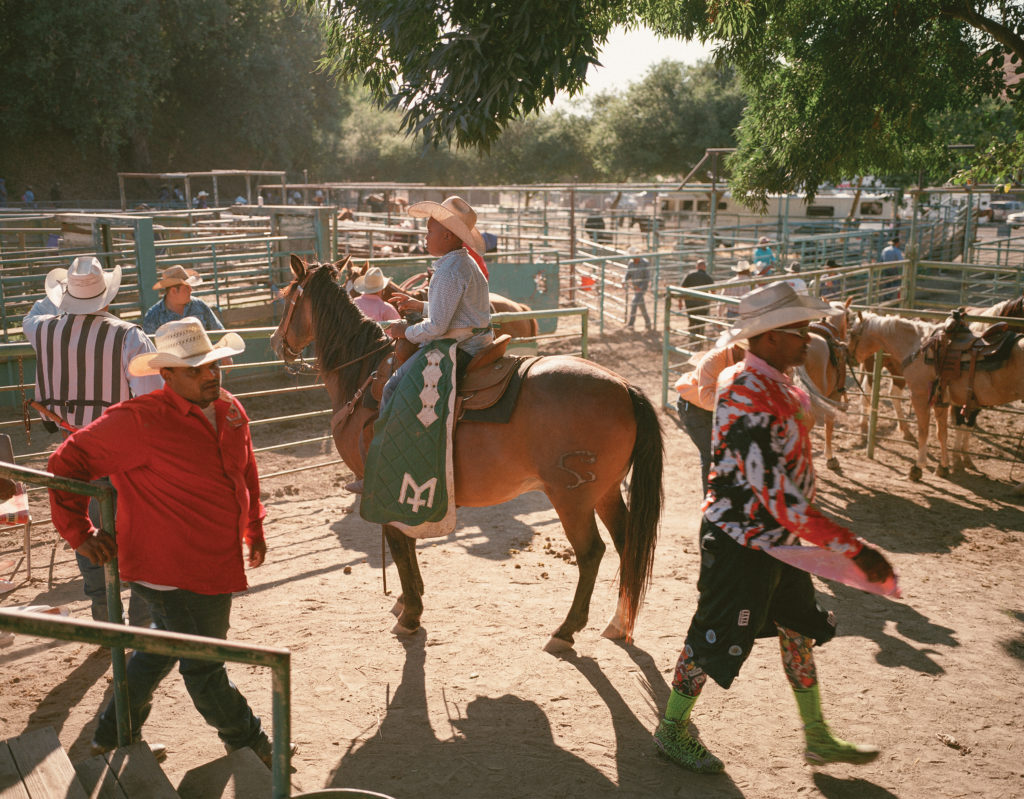
Ronald Jennings III, age 12 in this photo, was visiting the Bay Area in 2019 to attend the BPIR with his family from Texas. “I had to take care of all the steers and bulls at the rodeo and on my parents’ ranch,” he says. “Having horses is a big responsibility. We have to do a lot of work to keep the ranch in shape.”
Gabriela Hasbun, The New Black West by Gabriela Hasbun, published by Chronicle Books 2022
“Everyone at the rodeo is warm and welcoming; it’s one of the kindest and most humbling communities I’ve had the honor of photographing,” she says.
In the book, Hasbun included an image of and quote from a rider named Brianna Noble on her horse during a Black Lives Matter protest in DeFremery Park in June 2020. “People seemed more concerned about the destruction that would take place in our city, you know, the broken windows and stuff like that,” Noble told Hasbun. “They’re more angered by that than they are at the loss of life. So in an effort to change the narrative, I’m like, ‘OK, well maybe I can change the headlines.’ So that’s why I decided to take my horse down there. My entire life I’ve been ignored. The only time in my life I have not been ignored is when I’m sitting on a horse. It seems like nobody can ignore a Black woman on a horse.”
Generational Ties
As a member of a large family with roots spanning all the way to Arkansas, I get together with my distant paternal relatives once a year at our annual reunion. There’s always a feast, including fish caught by my father and his friends, white elephant-style gift exchanges, and arguments over domino matches. But a couple of years ago, my grandma’s cousin “sent out an email saying a few of us should get together in addition to our annual family picnic,” my grandma, Vivian O’Neal, tells me. That cousin suggested the rodeo.
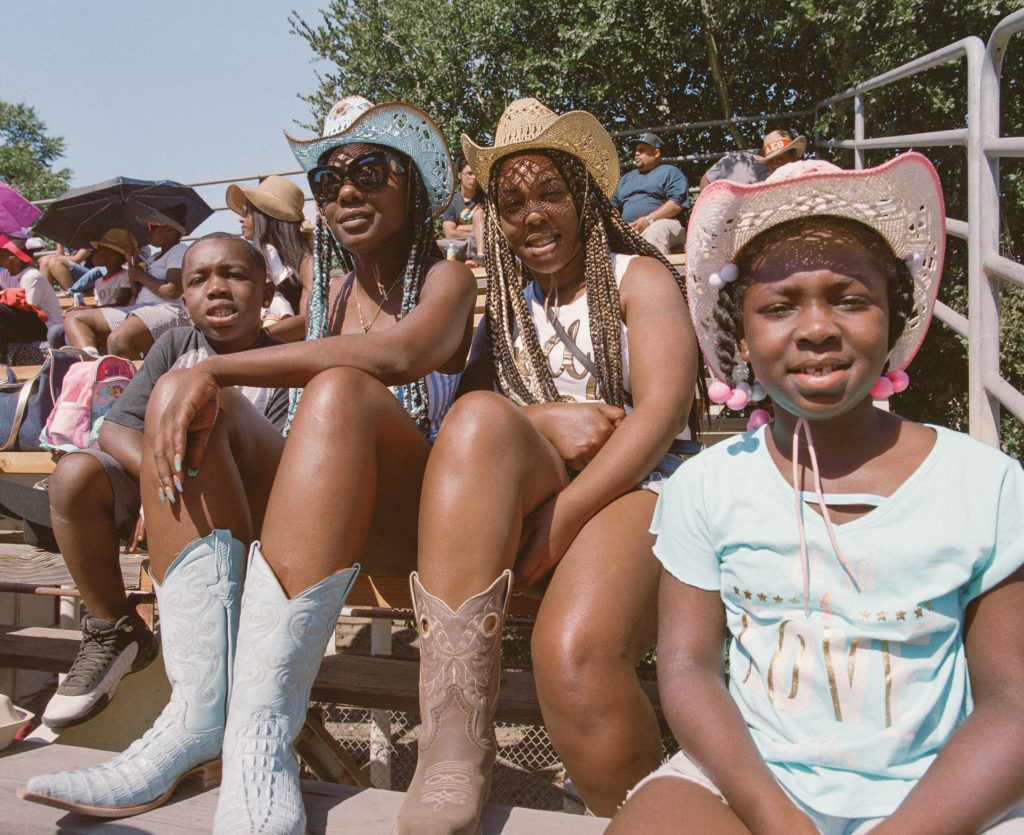
At this heritage rodeo, families in Oakland come to honor the Black cowboys who helped settle the West. More than 8,000 Black cowboys rode in the Western cattle drives of the late 19th century. This image is from 2018.
Gabriela Hasbun, The New Black West by Gabriela Hasbun, published by Chronicle Books 2022
My grandma was born and raised in San Francisco and grew up seeing rodeos televised at home but had never attended one. That changed after a Bill Pickett event. “It was really exciting to see all these Black people on horses, especially the women and cowgirls doing rope tricks and whatnot,” she tells me. Her uncle and his son were actually a part of the Black Cowboys Association, which she didn’t know until she opened the Oakland Tribune in the ’80s and saw her uncle “on a horse riding down Broadway.”
Familial ties to and at the rodeo are plentiful in the Bay Area, Douvel tells me. “Even the children who participate in the rodeo are part of rodeo families. Children start participating as early as 4 and 5 years old. There are three or four generations participating in the rodeo at once sometimes.”
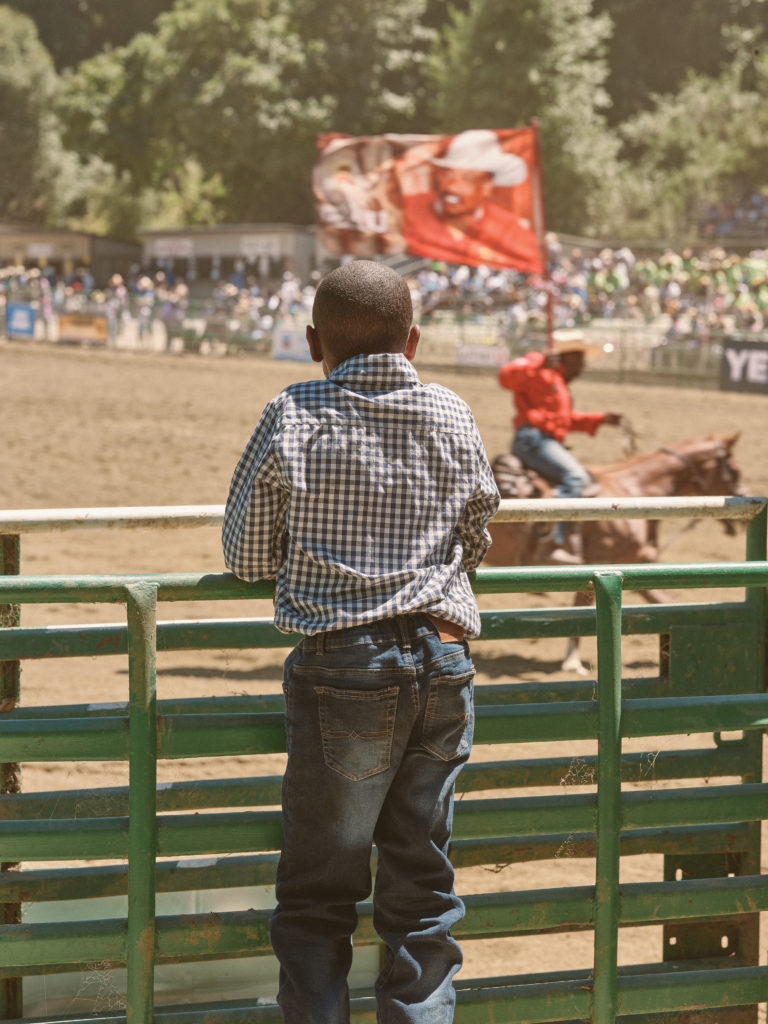
A young boy watches as a cowboy displays a flag saluting BPIR founder Lu Vason. The first Bill Pickett Invitational Rodeo was held in Denver in 1984. Vason died in 2015 at age 76. After his death, his wife, Valeria Howard-Cunningham, took charge of the BPIR. She is the only Black woman CEO and promoter of a national touring rodeo company.
Gabriela Hasbun, The New Black West by Gabriela Hasbun, published by Chronicle Books 2022
Douvel’s son first talked his way onto a bull at age 12 while hanging out in the back of the arena. “He had convinced one of the cowboys into letting him get onto one of the practice bulls, which is still 2,000 lbs. of bull,” Douvel recalls. “He only stayed on about three seconds and got thrown in the air about 6 feet and scrambled out of the arena. But from that day through high school and into college, he was a bull rider.”
Watching riders grow and mature over the years was a highlight, Hasbun says. The cowgirl on the book’s front cover, for example, “is now a mom of two and her two daughters ride and compete. A lot can happen in 12 years,” Hasbun says.
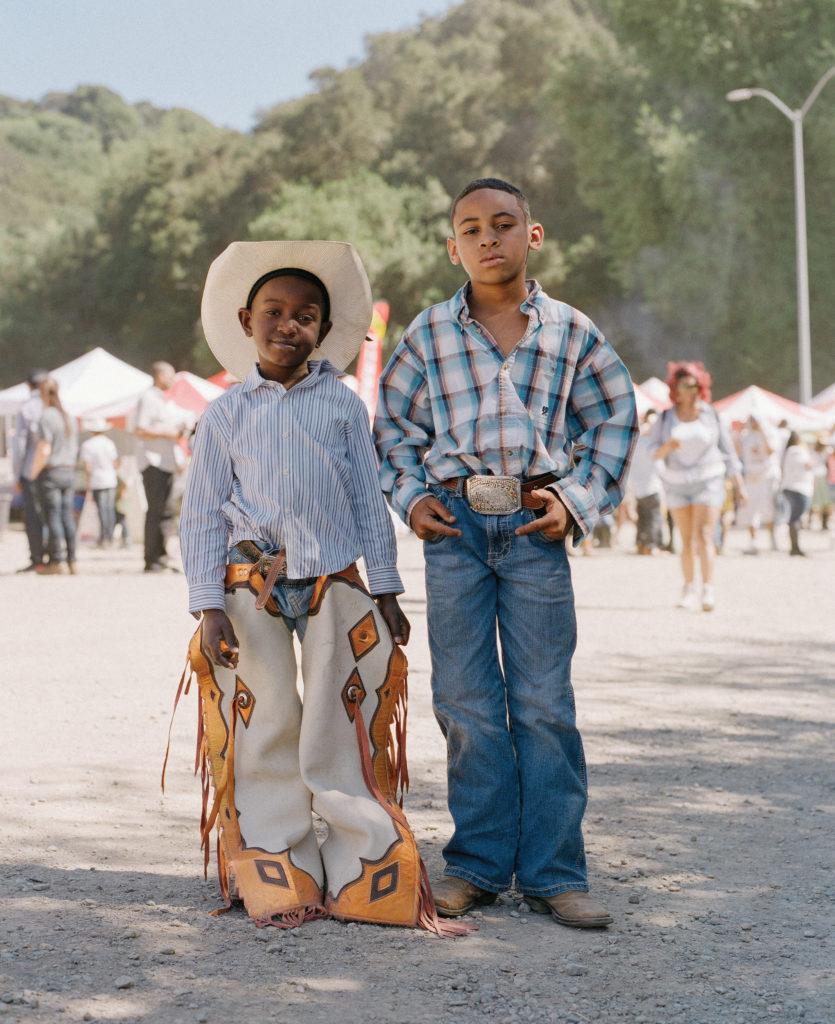
Two junior rodeo champions at the 2018 BPIR, Harold Williams Jr. (in chaps) and Lindon Demery. “My whole family rodeos,” Lindon explains, “and it became something I wanted to do. I started riding around age two and immediately started participating at the BPIR.” Lindon participates in junior breakaway roping, steer riding, barrel racing, and tiedown. He won his first saddle at a rodeo in Oklahoma as a reward for being the Year-End Calf Roping Champion.
Gabriela Hasbun, The New Black West by Gabriela Hasbun, published by Chronicle Books 2022
She met riders as young as 7 who are now in their late teens, parents who later turned into grandparents, and locals who always put on their finest attire. “One of the contestants used to have several beauty salons in Oakland and he’s been one of the most decorated cowboys at the rodeo for the last 20 years or so,” Hasbun tells me. “He’s a legend and still rides every day at 85. He has a community of people he’s supported and helped get into rodeo. That’s one of the most beautiful things about the community—that they’re constantly helping each other.”
Hasbun has “created a special tribute because everyone in that book can go down in history,” Douvel says. “We are bringing culture to a community that has been denied its part.”
EXPERIENCE A PIECE OF HISTORY
The Bill Pickett Invitational Rodeo is back with a full slate of national events. Here are a few stops where you can catch the rodeo in 2022. See the full schedule at billpickettrodeo.com
- JULY 9-10: Oakland, California
- JULY 16-17: Los Angeles, California
- AUG. 6-7: Atlanta, Georgia
- SEPT. 24: Washington, DC
